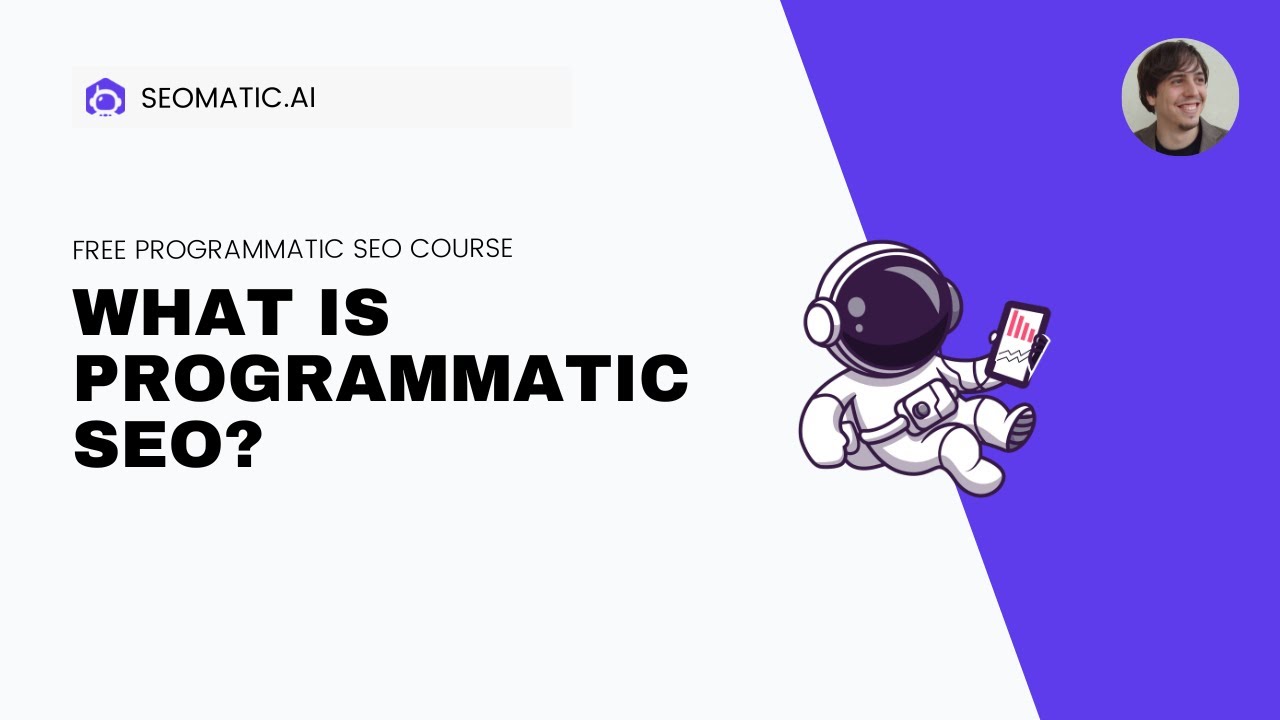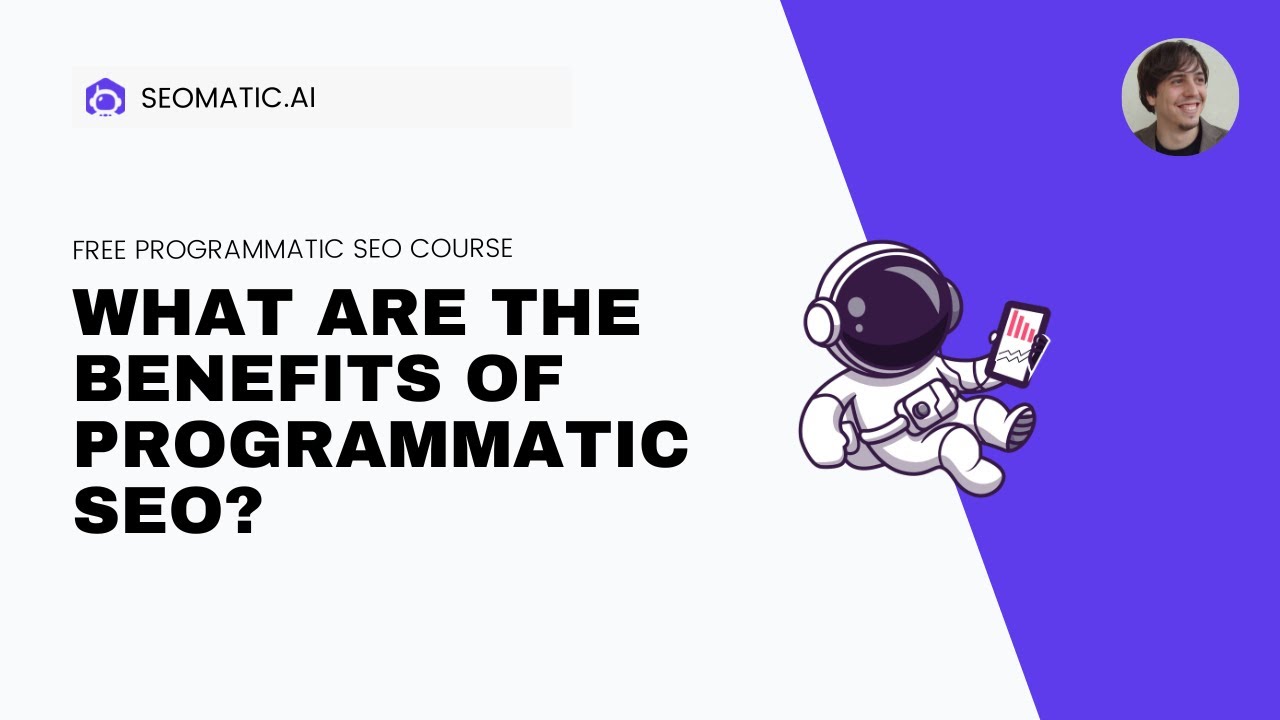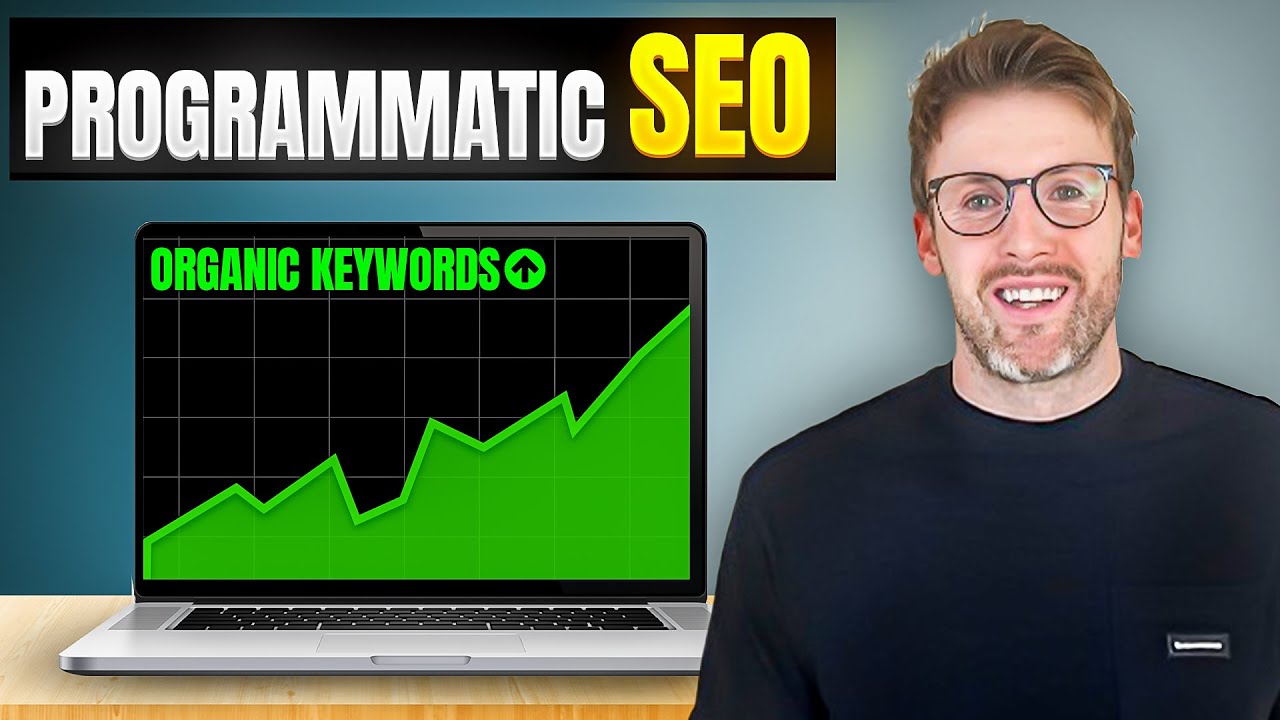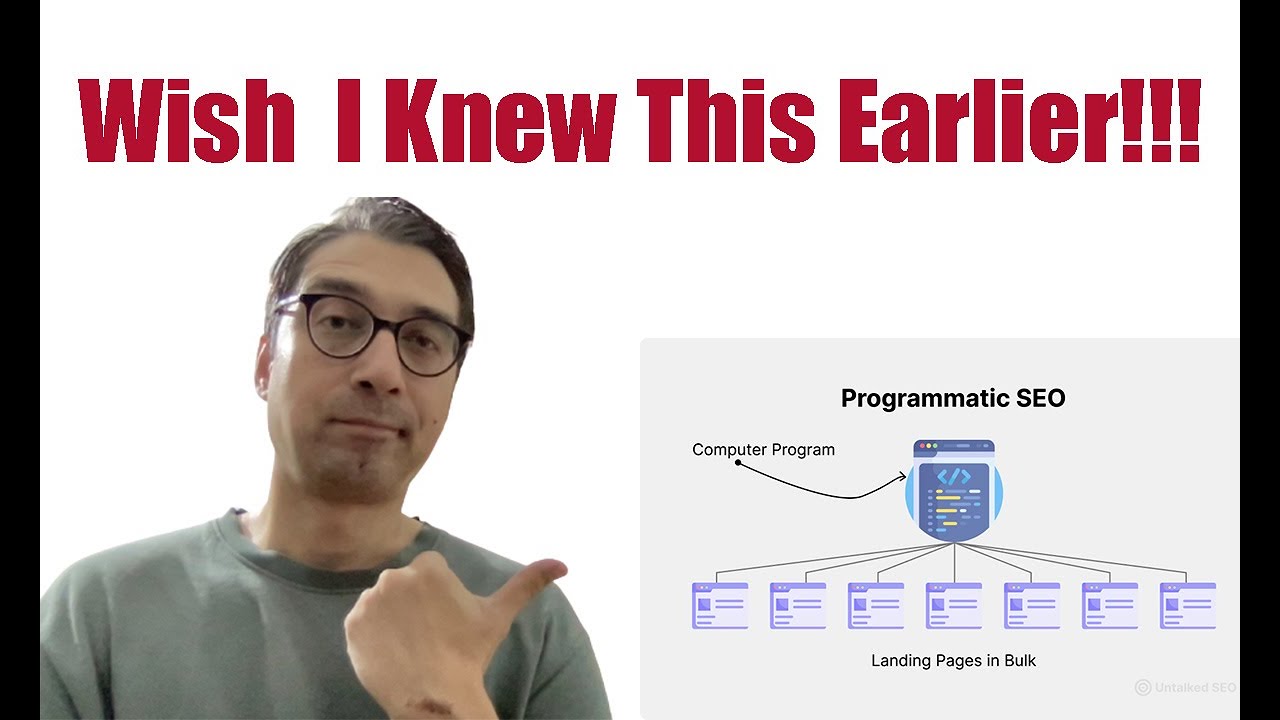Search Engine Optimization(SEO) has always been a crucial aspect of digital marketing strategies, but as technology advances, so does the field of SEO. One of the latest trends revolutionizing SEOis Programmatic SEO. Programmatic SEO leverages automation, artificial intelligence, and data-driven decision-making to optimize websites for search engines. This advanced approach to SEO offers real-time optimization, personalization, and improved efficiency. In this article, we will delve into the world of Programmatic SEO, exploring how it works and why it is considered the future of SEO.
What Is Programmatic SEO?

What is Programmatic SEO?
Programmatic SEO is an advanced approach to search engineoptimization (SEO) that utilizes automation, artificial intelligence (AI), and data-driven decision-making to optimize websites for search engines. It goes beyond traditional SEO methods by leveraging algorithms and machine learning to analyze data, identify patterns, and make real-time optimizations.
Programmatic SEO involves gathering and analyzing data from various sources, such as website analytics, search trends, user behavior, and competitor analysis. This data is used to gain insights into user intent, search patterns, and contentperformance. AI and machine learning algorithms are then employed to process this data and make informed decisions regarding optimization strategies.
Unlike traditional SEO, which often involves manual interventions and guesswork, programmatic SEO streamlines the optimization process through automation. It can automate repetitive tasks such as generating and optimizing metadata, creating XML sitemaps, monitoring website performance, and implementing technical SEOimprovements. This automation saves time and effort for marketers and SEO professionals, allowing them to focus on strategic initiatives.
Another key aspect of programmatic SEO is its ability to adapt to real-time changes. It can adjust the content, metadata, and other SEO elements dynamically to align with the latest search algorithms and user preferences. This real-time optimization ensures that websites stay relevant and competitive in the ever-evolving search landscape.
Programmatic SEO also enables personalized experiences for users. By understanding individual preferences and behavior, it can deliver tailored content, search results, and recommendations. This personalization enhances user satisfaction and engagement, ultimately driving better SEO performance.
Benefits Of Programmatic SEO

What Are The Benefits Of Programmatic SEO?
Programmatic SEO offers several benefits that make it a compelling approach to search engine optimization. Here are some key advantages:
- Improved Efficiency -Programmatic SEO leverages automation and data-driven decision-making, which significantly improves efficiency. It automates repetitive tasks, such as generating metadata or monitoring website performance, freeing up time for marketers and SEO professionals to focus on strategic initiatives and higher-level optimizations. This increased efficiency allows for better resource allocation and improved productivity.
- Enhanced Accuracy -By utilizing AI and machine learning algorithms, programmatic SEO minimizes human errors and guesswork. It can analyze vast amounts of data quickly and accurately, identify patterns, and make data-driven optimizations. This results in more precise and targeted SEO strategies, leading to improved performance and better search engine rankings.
- Scalability -Programmatic SEO is well-suited for handling large-scale websites and complex optimization requirements. It can efficiently optimize across multiple platforms, devices, and languages. As websites evolve and grow, programmatic SEO can scale its optimizations accordingly, ensuring consistent and effective optimization regardless of the website's size or complexity.
- Increased Agility -The dynamic nature of programmatic SEO allows it to adapt to changes in search algorithms, user behavior, and market trends in real-time. It can quickly adjust optimization strategies, content, and metadata to align with the latest search engine requirements. This agility enables websites to stay ahead of the competition, maintain relevance, and maximize visibility in search engine results.
- Advanced Personalization -Programmatic SEO leverages data-driven insights to deliver personalized experiences to users. By understanding individual preferences, search history, and behavior, programmatic SEO can tailor content, search results, and recommendations for each user. This personalized approach enhances user satisfaction, and engagement, and ultimately improves conversion rates and user loyalty.
Drawbacks Of Programmatic SEO
While programmatic SEO offers numerous benefits, it's important to consider some potential drawbacks that may arise:
- Limited Human Oversight -Programmatic SEO heavily relies on automation and algorithms, which may result in limited human oversight. While automation can improve efficiency, it may lack the nuanced understanding and creativity that human strategists bring to SEO. Human intervention and interpretation are still crucial for optimizing certain elements, such as crafting compelling and persuasive content.
- Dependency on Data Quality and Availability -Programmatic SEO heavily relies on data from various sources to make informed decisions. The accuracy and reliability of this data are vital for effective optimization. If the data sources are incomplete, inaccurate, or outdated, it can impact the quality of optimization strategies and outcomes. Additionally, data availability can vary across industries or niches, potentially limiting the effectiveness of programmatic SEO in certain cases.
- Lack of Adaptability to Unpredictable Factors -While programmatic SEO excels in adapting to changing search algorithms and trends, it may struggle with unpredictable factors or events. Sudden algorithm updates or shifts in user behavior that deviate significantly from historical data patterns can pose challenges. Programmatic SEO may require manual adjustments and flexibility to address these unforeseen circumstances.
- Potential for Over-Optimization -Programmatic SEO's data-driven approach may lead to over-optimization if not carefully monitored. Over-optimization refers to excessive optimization efforts that may violate search engine guidelines and result in penalties. It's crucial to strike a balance between optimization strategies and maintaining a natural, user-friendly website experience.
- Technical Complexity and Skill Requirements -Implementing programmatic SEO strategies often requires technical expertise. It involves working with AI, machine learning algorithms, and automation tools, which may be complex for some marketers or SEO professionals to navigate. Organizations may need to invest in training or hire specialized talent to effectively leverage programmatic SEO.
How Does Programmatic SEO Work?

Programmatic SEO - the key to SEO success
Programmatic SEO works by integrating various technologies and techniques to streamline the optimization process and achieve better search engine rankings. Here is an overview of how programmatic SEO operates:
- Data Gathering -Programmatic SEO starts by gathering data from multiple sources, such as website analytics, search trends, user behavior, and competitor analysis. This data provides insights into user intent, search patterns, and content performance. It forms the foundation for informed decision-making in the optimization process.
- AI and Machine Learning Algorithms -Programmatic SEO leverages AI and machine learning algorithms to analyze the collected data. These algorithms can process large volumes of information quickly, identify patterns, detect correlations, and extract valuable insights. The AI-powered analysis helps in understanding user behavior, identifying keywords, and predicting trends.
- Real-Time Optimization -Programmatic SEO thrives on real-time optimization. Instead of relying on static keyword targeting or fixed optimization strategies, programmatic SEO adapts to changes in search algorithms, user behavior, and market trends. It can dynamically adjust content, metadata, and other SEO elements to align with the latest requirements and preferences.
- Automation - Programmatic SEO utilizes automation to streamline repetitive tasks and save time. It can automatically generate and optimize metadata, create XML sitemaps, monitor website performance, and implement technical SEOimprovements. Automation reduces the need for manual interventions and allows marketers to focus on higher-level strategic initiatives.
- Personalization -Programmatic SEO enables personalized experiences for users. By analyzing user data and behavior, programmatic SEO can deliver tailored content, search results, and recommendations. This personalization enhances user satisfaction and engagement, driving better SEO performance and conversion rates.
- Continuous Monitoring and Analysis -Programmatic SEO involves continuous monitoring of website performance, search engine rankings, and user behavior. It uses analytics tools to track key metrics and gather feedback on optimization strategies. This data-driven approach allows for ongoing analysis and refinement of programmatic SEO tactics.
When Is It Best To Use Programmatic SEO?
Programmatic SEO can be particularly advantageous in several scenarios. Here are some situations where it is best to use programmatic SEO:
- Large-scale websites - Programmatic SEO is highly beneficial for large-scale websites with numerous pages and complex structures. Automation and data-driven decision-making help streamline the optimization process and ensure consistent and efficient optimization across the entire website.
- Dynamic and Real-Time Optimization -When the SEO landscape is characterized by frequent algorithm updates, changing user behavior, and evolving search trends, programmatic SEO shines. Its ability to adapt in real-time and make dynamic optimizations ensures that websites stay relevant and competitive.
- Personalized Experiences -If delivering personalized experiences is a priority, programmatic SEO is an excellent choice. By leveraging user data and AI algorithms, programmatic SEO can tailor content, recommendations, and search results to individual user preferences, enhancing user satisfaction and engagement.
- Data-Driven Decision-Making -If your organization values data-driven decision-making, programmatic SEO aligns perfectly with that approach. It utilizes AI and machine learning algorithms to analyze data, identify patterns, and make informed optimization decisions based on real-time insights.
- Efficiency and Scalability -Programmatic SEO is highly efficient and scalable, making it ideal for organizations that require streamlined optimization processes and the ability to handle large volumes of data. It automates repetitive tasks, saves time, and allows marketers to focus on higher-level strategic initiatives.
- Multichannel and Multidevice Optimization - When optimizing websites for various channels (such as desktop, mobile, voice search) and devices, programmatic SEO excels. It can adapt content and optimization strategies to align with different platforms and user experiences, ensuring consistent optimization across all channels.
How To Do Programmatic SEO?

Mastering Programmatic SEO: Unleashing the Power of Automation (Beginners Guide 2023)
Implementing programmatic SEO involves several steps and considerations. Here's a guide on how todo programmatic SEO:
Data Collection And Analysis
- Gather data from various sources, such as website analytics, search trends, user behavior, and competitor analysis.
- Use AI and machine learning algorithms to analyze the collected data, identify patterns, and extract valuable insights.
Keyword Research And Optimization
- Conduct thorough keyword research to understand user intent and identify relevant keywords.
- Optimize content, metadata, and other on-page elements with targeted keywords using automation tools or content management systems.
- Implement dynamic keyword insertion to create personalized experiences for users.
Technical SEO Optimization
- Ensure your website follows best practices for technical SEO, such as having clean URL structures, optimized page load speed, mobile-friendliness, and secure HTTPS connections.
- Implement schema markupto enhance search engine understanding of your content and improve visibility in rich snippets.
Content Creation And Optimization
- Develop high-quality, engaging, and relevant content based on user intent and keyword research.
- Optimize content with the right keywords, headings, meta tags, and internal linking to improve visibility and user experience.
- Leverage automation to dynamically update and optimize content based on real-time data and user behavior.
Real-Time Optimization And Monitoring
- Continuously monitor search engine rankings, website performance, and user behavior using analytics tools.
- Leverage programmatic SEO platforms or automation tools to make real-time optimizations based on data insights and changing search trends.
- Adjust content, metadata, and other SEO elements dynamically to align with the latest search engine algorithms and user preferences.
User Experience And Personalization
- Analyze user behavior and preferences to deliver personalized experiences.
- Tailor content, search results, and recommendations based on individual user data.
- Continuously optimize user experience by improving site navigation, reducing bounce rates, and enhancing engagement metrics.
Continuous Testing And Iteration
- Implement A/B testing and experimentation to evaluate the effectiveness of optimization strategies.
- Continuously refine and iterate programmatic SEO tactics based on data-driven insights and performance metrics.
Examples Of Programmatic SEO
- Real-Time Content Optimization- With programmatic SEO, websites can dynamically optimize content in real-time based on user behavior and search trends. For example, if a user visits a website multiple times and shows interest in a particular topic, programmatic SEO can personalize the content by dynamically updating the homepage or landing pages to showcase relevant content related to the user's interests.
- Dynamic Meta Tags and Title Optimization - Programmatic SEO can automatically generate and optimize meta tags and titles based on the context of the page and user intent. For instance, if a user searches for "best running shoes for women," programmatic SEO can dynamically generate meta tags and titles that include relevant keywords and appeal to the user's search intent, improving the chances of higher click-through rates and organic search rankings.
- Automated XML Sitemap Generation -Programmatic SEO can automate the process of generating XML sitemaps, which help search engines discover and index website pages more efficiently. These sitemaps can be automatically updated whenever new pages are added or existing pages are modified, ensuring that search engines are aware of the latest content on the website.
- AI-Powered Content Recommendations -Programmatic SEO can use AI algorithms to analyze user behavior and recommend related content. For example, if a user reads an article about healthy recipes, programmatic SEO can dynamically display a list of recommended articles or blog posts on nutrition, fitness, or healthy lifestyle choices, based on the user's preferences and browsing history.
- Dynamic Keyword Insertion -Programmatic SEO can dynamically insert keywords into website content based on user search queries. For instance, if a user searches for "affordable hotels in New York," programmatic SEO can dynamically insert variations of that search term into the content, such as "Find Affordable Hotels in New York" as a heading or within the body text, making the content more relevant and appealing to the user's search query.
Challenges Of Programmatic SEO

Issues With Programmatic SEO And How To Fix Them
Programmatic SEO, like any other technology-driven approach, presents certain challenges and ethical considerations that should be taken into account. Here are some challenges and ethical considerations associated with programmatic SEO:
- Data Privacy and Security -Programmatic SEO relies on collecting and analyzing user data to deliver personalized experiences. It's crucial to handle user data responsibly, ensuring compliance with data privacy regulations and protecting user information from unauthorized access or misuse. Transparency and consent mechanisms should be in place to maintain ethical data practices.
- Reliance on Algorithms - Programmatic SEO heavily depends on algorithms and automation. While algorithms provide efficiency and data-driven insights, they can also introduce biases or limitations. Care should be taken to ensure that the algorithms used are fair, unbiased, and transparent. Regular monitoring and human oversight are essential to avoid potential negative impacts.
- False Positives and Over-Optimization - Programmatic SEO may encounter challenges in distinguishing false positives, where the optimization may not align with user intent or deliver the desired results. Over-optimization, driven solely by data and algorithms, can lead to unnatural or spammy content. Striking a balance between data-driven insights and maintaining a natural user experience is essential.
- Lack of Human Creativity and Contextual Understanding -While programmatic SEO can automate certain tasks, it may lack the human creativity and contextual understanding required for strategic decision-making. Human expertise is necessary to interpret data, analyze user behavior, and create compelling content that resonates with users beyond mere keyword optimization.
- Adapting to Rapid Changes -Programmatic SEO's real-time optimization requires agility and adaptability to rapid changes in search algorithms and user behavior. Keeping up with these changes can be challenging and may require continuous monitoring, learning, and adjustment to optimize effectively.
- Bias in Personalization -Programmatic SEO aims to deliver personalized experiences, but there is a risk of inadvertently reinforcing biases. Algorithms may rely on historical data, leading to the perpetuation of existing biases or the exclusion of certain demographics. Regular evaluation and adjustment of personalization algorithms are necessary to mitigate these biases and ensure fairness.
People Also Ask
How Does Programmatic SEO Differ From Traditional SEO?
Programmatic SEO differs from traditional SEO by leveraging automation and data-driven insights. It relies on algorithms to make real-time optimizations, while traditional SEO often involves manual interventions and guesswork. Programmatic SEO offers dynamic and personalized strategies, whereas traditional SEO may focus more on static keyword targeting.
Is Programmatic SEO Suitable For All Types Of Websites?
Programmatic SEO can be beneficial for various types of websites, including e-commerce, news, blogs, and service-based websites. However, the specific implementation and effectiveness may vary depending on factors such as the website's size, complexity, target audience, and available data.
How Does Programmatic SEO Handle Algorithm Updates?
Programmatic SEO is designed to adapt to algorithm updates. By leveraging real-time data analysis and automation, programmatic SEO can quickly adjust optimization strategies to align with the latest algorithm requirements. This agility helps websites maintain visibility and rankings in search engine results.
Conclusion
As search engines become increasingly sophisticated, traditional SEO methods alone may not be enough to stay competitive. Embracing Programmatic SEO can unlock better search rankings, improve user experiences, and increase organic traffic. In this dynamic digital landscape, Programmatic SEO paves the way for the future of SEO, empowering marketers and SEO professionals to thrive in the ever-evolving world of search engine optimization.
